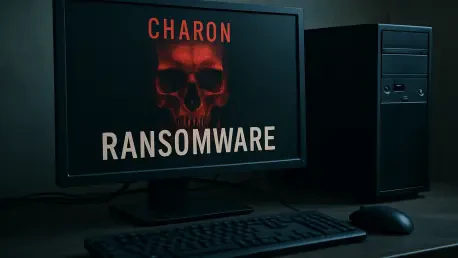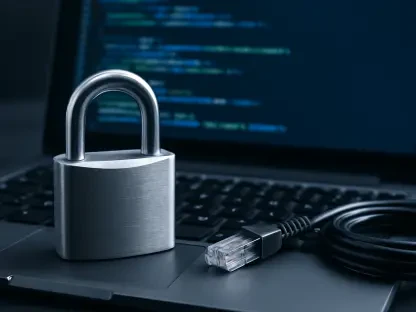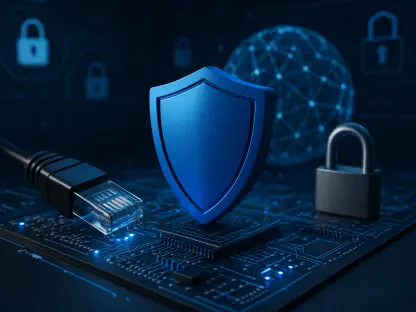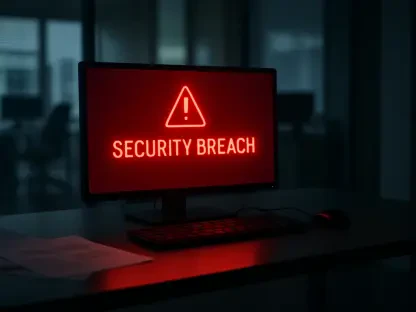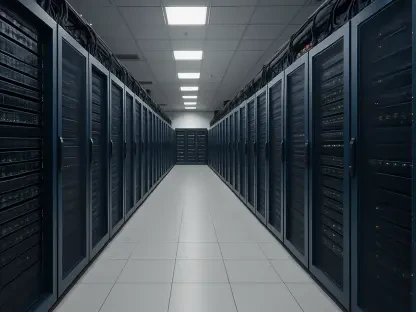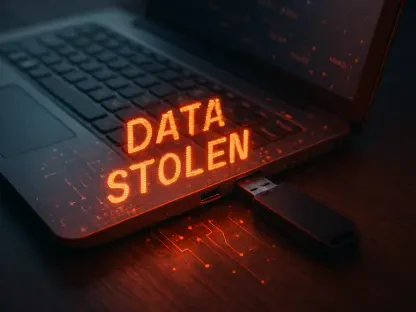Imagine a stealthy intruder slipping past the most advanced security systems, targeting critical industries with surgical precision, and leaving behind a trail of encrypted data and operational chaos. This is the reality of Charon ransomware, a newly emerged cyber threat that has redefined the boundaries of ransomware attacks with its advanced persistent threat (APT)-style tactics. Named after the mythological ferryman of the underworld, Charon has already made its mark with devastating attacks on high-value sectors in the Middle East. This technology review explores the intricate mechanisms behind Charon’s operations, evaluates its impact on targeted industries, and assesses the challenges it poses to cybersecurity defenses in an era of increasingly sophisticated digital threats.
Unveiling the Charon Threat Landscape
Charon ransomware first surfaced in documented attacks within the Middle East, specifically targeting the public sector and aviation industry. This deliberate focus on critical infrastructure highlights the strategic intent behind its deployment, aiming to disrupt operations where the stakes are highest. Unlike traditional ransomware that often casts a wide net, Charon’s precision suggests a deeper understanding of its targets, raising concerns about the potential motives driving its campaigns.
The significance of Charon lies not only in its choice of victims but also in its approach, which mirrors the stealth and persistence typically associated with state-sponsored APT groups. This convergence of ransomware and espionage tactics marks a troubling evolution in cyber threats, blurring the lines between financial gain and strategic disruption. As organizations grapple with this hybrid menace, understanding Charon’s capabilities becomes essential for building robust defenses.
Technical Dissection of Charon’s Attack Vectors
Exploiting Legitimate Processes for Malicious Ends
At the heart of Charon’s attack strategy is its use of DLL sideloading, a technique that leverages a legitimate binary, Edge.exe, to load a malicious DLL known as msedge.dll or SWORDLDR. This method allows the ransomware to bypass initial security checks by appearing as a trusted process. Once loaded, the malicious code injects its payload into svchost.exe, a common Windows service, effectively disguising its activities and evading endpoint detection and response (EDR) systems.
This masquerading tactic showcases a high level of sophistication, as it exploits inherent trust in system processes to operate under the radar. By embedding itself within routine operations, Charon minimizes the likelihood of early detection, giving attackers ample time to execute their encryption routines. Such evasion capabilities pose a significant challenge to traditional security tools, which often struggle to differentiate between legitimate and malicious behavior in these contexts.
Multilayered Payload Delivery for Enhanced Stealth
Beyond process manipulation, Charon employs a multistage payload extraction process to further obscure its intentions. A seemingly innocuous log file, DumpStack.log, serves as a vessel for encrypted shellcode, which is decrypted to deliver the final ransomware payload. This indirect method of deployment adds a layer of complexity that complicates forensic analysis and mitigation efforts.
Additionally, intermediate payloads within Charon’s attack chain are protected by secondary encryption, a technique reminiscent of APT group methodologies. This deliberate design choice reflects an intent to thwart reverse-engineering attempts and prolong the ransomware’s undetected presence within compromised networks. The technical intricacy of these mechanisms underscores the advanced skill set behind Charon’s development, setting it apart from less refined ransomware strains.
Industry Impact and Strategic Targeting
Charon’s real-world impact has been profound, particularly in the Middle East, where its attacks on the public sector have disrupted governmental operations. By encrypting both local and networked data, the ransomware has caused significant downtime, hampering critical services and necessitating costly recovery efforts. The financial burden of ransom payments, combined with the expense of system restoration, places immense pressure on affected entities.
The aviation industry, another prime target, has faced similar challenges, with Charon’s intrusions leading to operational halts and compromised safety protocols. These sectors, vital to regional stability and economic activity, represent high-value targets for attackers seeking maximum disruption. The strategic selection of such industries suggests that Charon’s operators prioritize impact over sheer volume, amplifying the threat’s severity.
Moreover, the ripple effects of these attacks extend beyond immediate victims, as interconnected supply chains and partner networks become vulnerable to secondary exploitation. This cascading damage illustrates the broader implications of Charon’s campaigns, emphasizing the urgent need for sector-wide resilience strategies to counteract such targeted threats.
Attribution Challenges and Uncertainties
Despite its sophisticated design, pinpointing the origins of Charon remains elusive. Technical overlaps with the China-backed APT group Earth Baxia, also known by aliases such as APT41 and Wicked Panda, have fueled speculation about potential state sponsorship or shared tooling. Similarities in toolchains and deployment tactics suggest a possible connection, yet definitive evidence is lacking.
Complicating matters further, Charon’s custom ransom notes, which often name the targeted organization explicitly, introduce ambiguity about whether this is a signature of a specific group or an imitation by independent actors. Such uncertainties highlight the broader difficulties in cyber threat attribution, where shared techniques and replicated code can obscure true responsibility. This opacity hinders efforts to predict Charon’s next moves and develop tailored countermeasures.
The challenge of tracking and mitigating Charon is compounded by the rapid evolution of ransomware tactics, as operators adapt to defensive innovations. As attribution remains an unresolved puzzle, organizations must focus on strengthening their security posture rather than relying solely on identifying the threat’s source, a task that may never yield conclusive results.
Evolving Trends in Ransomware Sophistication
Charon exemplifies a disturbing trend in the ransomware landscape, where operators increasingly adopt APT-level tactics to enhance their effectiveness. This shift signifies a departure from the spray-and-pray approach of earlier ransomware, moving toward more calculated and persistent attacks that prioritize stealth over speed. The result is a heightened risk to organizations unprepared for such advanced methodologies.
This blending of ransomware with cyber espionage techniques creates a dual threat, combining the immediate damage of data encryption with the long-term risks of data exfiltration and network compromise. As these lines continue to blur, cybersecurity professionals face the daunting task of defending against adversaries who operate with the patience and resources of nation-state actors.
Looking ahead, the trajectory from the current year to 2027 suggests that ransomware families like Charon may further refine their evasion capabilities, potentially integrating artificial intelligence or other emerging technologies to outpace detection mechanisms. This ongoing arms race between attackers and defenders underscores the need for continuous innovation in security practices to stay ahead of evolving threats.
Final Reflections on Charon’s Threat Profile
Reflecting on the analysis, Charon ransomware stands out as a formidable adversary that challenges the cybersecurity community with its APT-style tactics and targeted approach. Its ability to disrupt critical industries in the Middle East, coupled with intricate attack mechanisms like DLL sideloading and multilayered payload delivery, paints a picture of a highly capable threat actor. The uncertainty surrounding its attribution only adds to the complexity of mounting an effective response.
Moving forward, organizations need to prioritize a multilayered defense strategy, focusing on hardening systems against process exploitation and enhancing monitoring for suspicious activities. Implementing strict controls on DLL loading and ensuring robust EDR protections are critical steps to mitigate risks. Additionally, fostering international collaboration to share threat intelligence can provide a broader shield against Charon and similar ransomware strains.
Ultimately, the battle against Charon necessitates a proactive mindset, with investments in adaptive security technologies and training to anticipate future iterations of such threats. By building resilience across technical and operational domains, entities aim to reduce the devastating impact of these sophisticated cyberattacks, safeguarding their digital ecosystems for the challenges that lie ahead.
